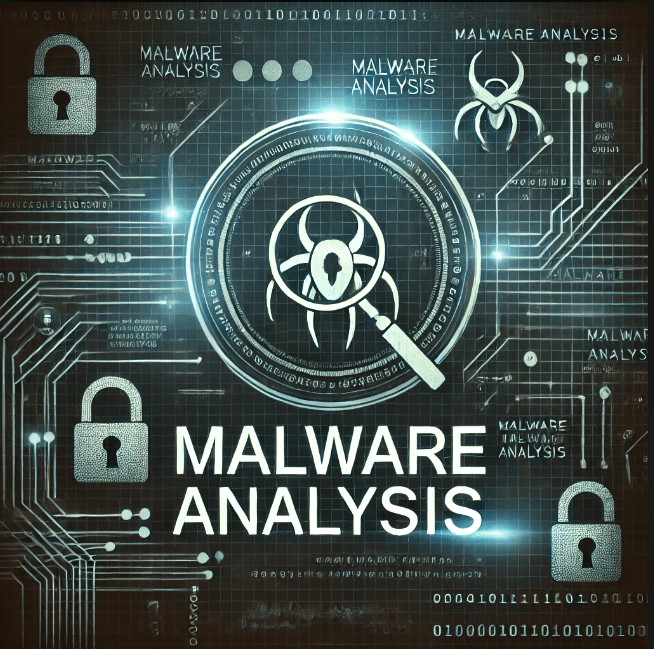In today’s high-tech landscape, malware analysis has become crucial as cyber threat analysis evolves to keep pace with increasingly sophisticated attacks. Malware remains one of the most powerful tools in an attacker’s arsenal, and cybersecurity experts rely on malware analysis to understand how these threats operate, assess their impact, and develop effective mitigation strategies. This blog delves into the various techniques and tools used to identify, analyze, and respond to malware, emphasizing the role of forensic analysis in building a resilient cyber defense.
What is Malware Analysis?
Malware analysis is the examination of suspicious files, code, or software to identify its properties, functionality, and possible impact on a system. This analysis can be done from a controlled environment so that a researcher could really understand how malware functions, what system changes it makes, and what IOCs it generates.
Why Malware Analysis is Important?
- Threat Detection: Understand the behavior, goal, and objective of the malware.
- Incident Management: Facilitate response through knowledge of malware scope, impact, and mode of transmission.
- Defense Improvement: Organizations can put in place security measures against future incidents due to experience with malware.
- Legal and Compliance: Malware forensic delivers accurate support for regulatory compliance and legal issues.
Categories of Malware Analysis
There are two main categories of malware analysis: static and dynamic. Both approaches consist of their respective diversity of insights into how malware functions. They may be used together for the best results.
Static Analysis:
- Description: It involves analyzing the malware’s code with no execution process, including file analysis, header analysis, and reversing of the code.
- Advantages: This technique is safer because it does not involve execution of the malware; thereby, the opportunity of accidental infections is less. It is also very fast and can also provide details about the structure and intent of the malware.
- Tools Used: Some very popular tools that are used include strings extractors- that extract readable text, disassemblers, such as IDA Pro, and hex editors, like HxD .
Dynamic Analysis:
- Description: Dynamic analysis performs execution of the malware in a controlled environment, most commonly in a virtualized sandbox; it monitors for runtime behavior.
- Advantages: In this methodology, one would gain a real-time view of what the malware is doing, such as file creation, change of the registry, network communications, and attempts to connect to command-and-control servers.
- Tools Used: Dynamic analysis relies on sandboxes (like Cuckoo Sandbox), network monitoring tools, such as Wireshark, and process monitoring tools, such as Process Monitor.
Key Techniques in Malware Analysis and Forensics
Here are a few of the key techniques that professionals utilize in malware analysis and forensics:
1. Behavioral Analysis
- Description: It observes what malware does when run on the system. Analysts look for any kind of file changes, attempts to connect to the network, attempts to modify the registry, and any form of external communication attempts.
- Use case: Behavioral analysis is quite useful where malware is dependent on external communication, such as C2 requests. Monitoring network activity brings forth IP addresses, domains, and IOCs.
- Tools: Some of the commonly used tools in monitoring behavior are Sysinternals Suite, Wireshark, and Cuckoo Sandbox.
2. Code Analysis (Reverse Engineering)
- Description: Code analysis, otherwise known as reverse engineering, is the manual examination of the code of the malware to understand its functionality. The binary code can be reversed into meaningful assembly language with the help of a disassembler or decompile.
- Use Case: Since malware may make the best use of obfuscation to achieve complexity, reverse engineering is often required. It would help the individual find out some unique vulnerabilities that the malware might be exploiting.
- Tools: Code analysis can be performed using these tools: IDA Pro, Ghidra, and OllyDbg.
3. Memory Analysis
- Description: Memory analysis, which also goes by the name of live forensics, captures and analyzes the memory of a system during or shortly after malware infection to identify the running processes, network connections, and other suspicious files.
- Use Case: Memory analysis proves helpful in recognizing fileless malware, whose presence is in the memory only.
- Tools: Tools like Volatility and Rekall are used for memory forensics.
4. Signature-Based Analysis
- Description: Signature-based analysis compares malware code against a database of known signatures (for instance, virus definitions) in order to identify and categorize it.
- Use Case: This method is fast and effective at identifying known malware variants but has poorer performance on new or modified strains.
- Tools: Antivirus software and signature-based detection systems, like YARA, are most widely used.
5. Hashing for Integrity and Classification
- Description: Hashing algorithms, such as for instance, MD5, SHA-256, are employed to create unique identifiers for malware files. The hashes aid in the categorization and cataloging of the samples that ensures integrity in analysis.
- Use Cases: Hashing enables the quick comparison of samples, thus ensuring proper identification and integrity checks between various analyses.
- Tools: Utilized tools include HashCalc and SHA256sum for generating and verifying hashes.
6. Network Forensics
- Description: Network forensics is critical for malware that communicates with external entities. It is the process of capturing and analyzing network traffic generated by the malware.
- Use case: It identifies IP addresses, domains, and patterns in network traffic that indicate C2 communication or data exfiltration attempts.
- Tools: Wireshark and Snort tools can monitor and log suspicious traffic created by malware.
Common Malware Types and Analysis Techniques

- Viruses: It infect files and spread across systems. Behavioral and code analysis are some of the common techniques to study viruses.
- Ransomware: It encrypts files to demand a ransom. Dynamic analysis would determine the encryption mechanisms employed whereas network forensics might expose the communications with the C2 servers .
- Trojans: It masquerades as legitimate software but executes malicious code. Behavioral analysis usually discovers malicious payloads
- Worms: These are self-replicating malware spread over the networks. Its spreading pattern can be traced using network forensics.
- Rootkits: They will hide their existence in the system and are likely to be tough to locate. Analysis of memory and code is required to expose rootkit activity.
Malware Analysis in Incident Response
In incident response, malware analysis remains critical to enabling very critical insights at every stage:
- Detection and Triage: Malware analysis gives a verdict on whether the suspicious file is malicious or not, classifies it, and provides IOCs for detection.
- Containment and Eradication: Understanding how malware spreads helps incident response teams contain it effectively. The method of entry and spread of the malware is essential for eradication.
- Recovery: Malware analysis helps in secure recovery processes, which restore compromised systems without the risk of reinfection.
- Lessons Learned and Improvement: Analysis reports from malware incidents contribute to building threat intelligence, refining detection systems, and strengthening defenses. To know detailed information click here
Malware Analysis and Forensic Tools
For easier use, here are some of the commonly used malware analysis tools:
- Static Analysis: IDA Pro, Ghidra, HxD, PEiD
- Dynamic Analysis: Cuckoo Sandbox, Process Monitor, RegShot
- Memory Forensics: Volatility, Rekall
- Network Forensics: Wireshark, Zeek (formerly Bro)
- Signature-Based Tools: YARA, ClamAV
Good Practice in Malware Analysis
To safely and effectively analyze malware, follow these best practices:
- Secure Environment: Always work in isolated, virtual environments and never risk accidental infection.
- Documentation: Record of Work Performed or Changes Made to Files, Network Activity, and System Logs.
- Chain of Custody: In forensics, keeping a chain of custody is crucial in maintaining evidence integrity, especially in a legal case.
- Keep Up-to-Date: Update your tools and malware signatures so that it identifies the latest threats.
- Utilize Threat Intelligence: Utilize threat intelligence feeds to identify patterns and indicators of known threats.
Conclusion
Malware analysis and forensics are highly important skills any cybersecurity professional should be equipped with. By breaking down the malwares, an organization gains insight into how the attackers are working, finds out about their tactics, and strengthens its defense against those for the future. The techniques and tools used in malware forensics help in incident response while simultaneously building up a whole cybersecurity strategy. Whether static, dynamic, or memory analysis, it enables the malware to transform cyber threats into valuable intelligence with better resiliency overall.







